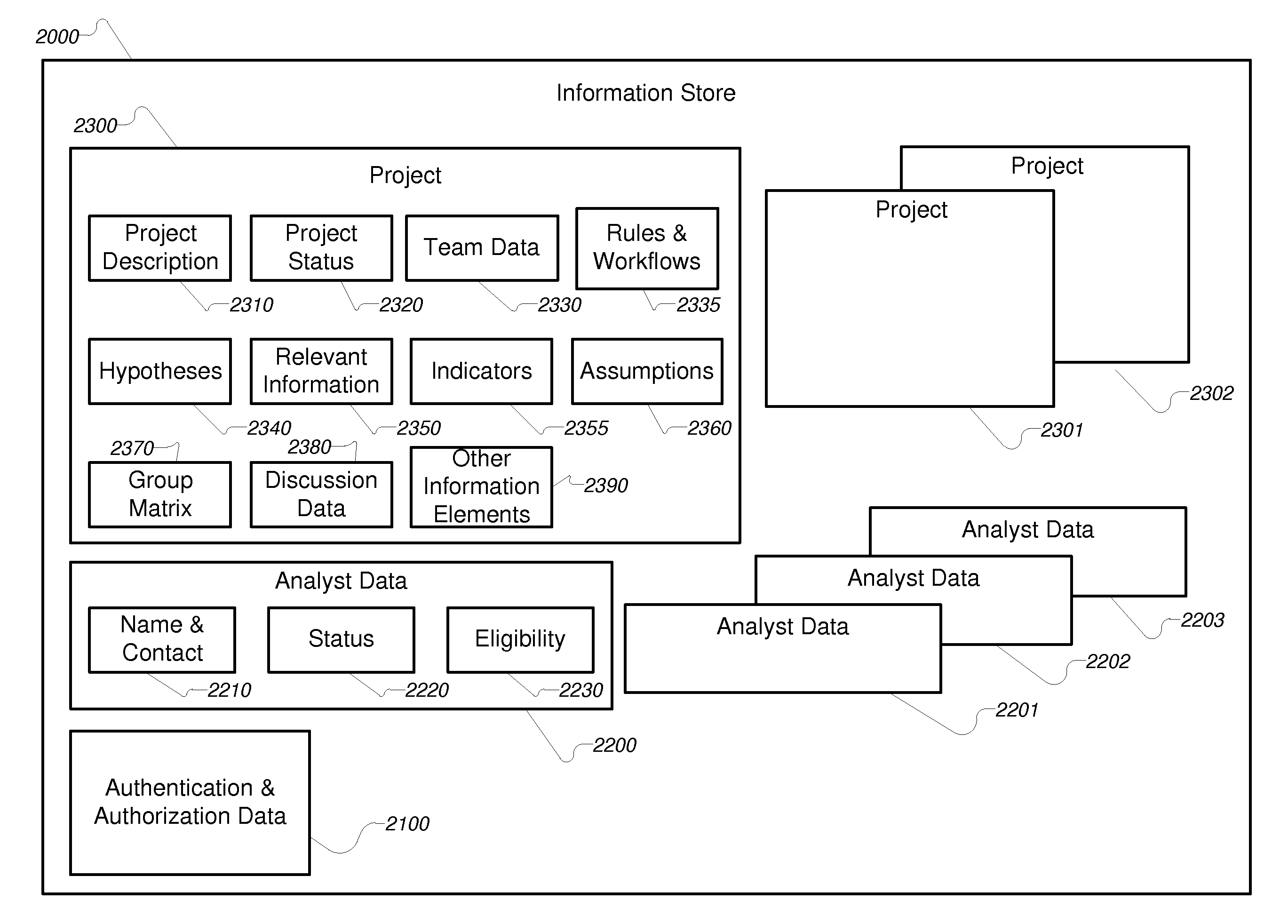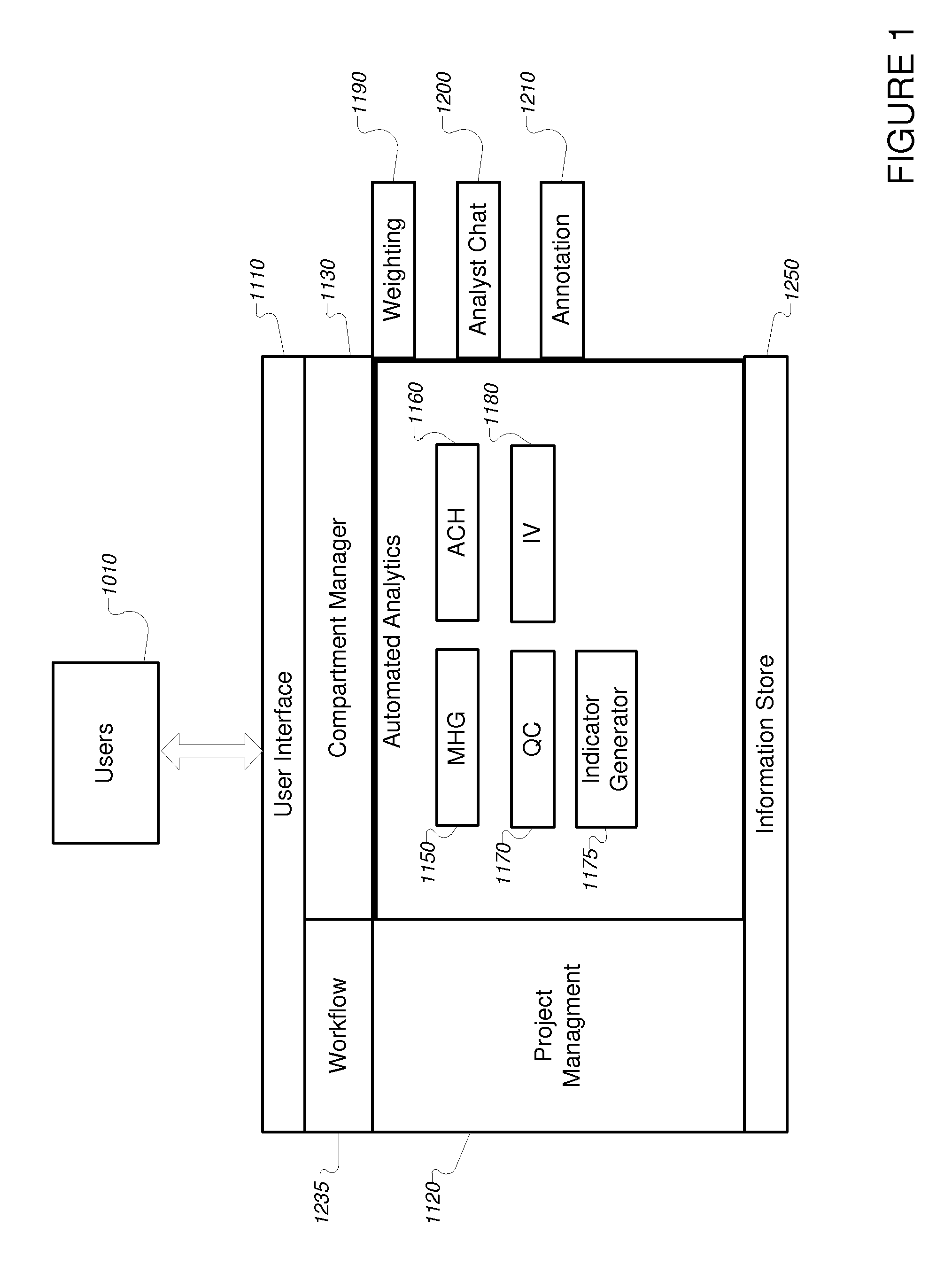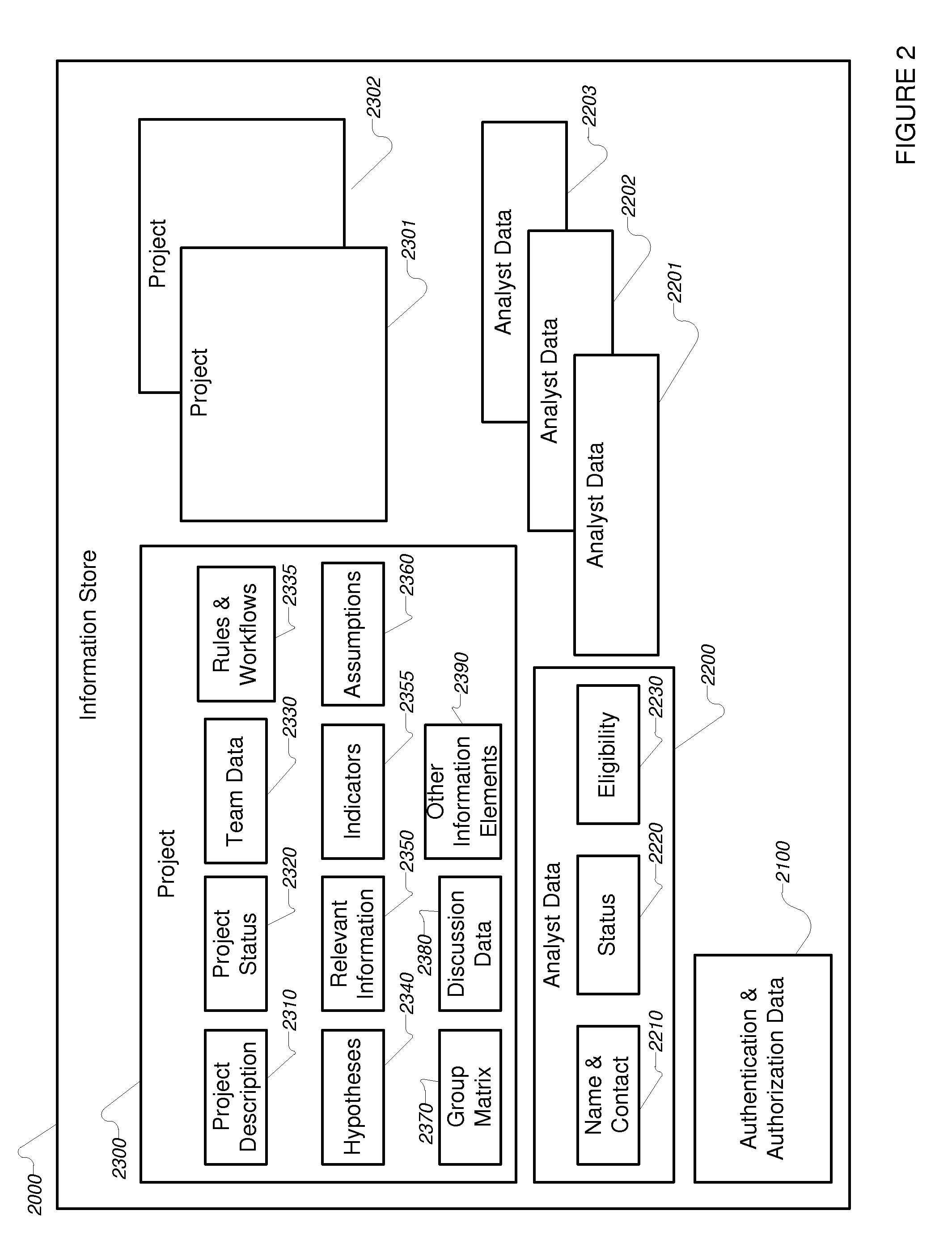Collaborative structured analysis system and method
a structured analysis and collaborative technology, applied in the field of collaborative analysis, can solve the problems of reducing the support for hypotheses, high chance of analysts making errors, and repetitive use of ach techniques manually,
- Summary
- Abstract
- Description
- Claims
- Application Information
AI Technical Summary
Benefits of technology
Problems solved by technology
Method used
Image
Examples
Embodiment Construction
[0046]Exemplary embodiments of the current invention described herein are intended to illustrate important concepts of the current invention, and to aid those skilled in the art in practicing the invention. They are not to be considered limiting in any manner on alternative embodiments that are not so described.
[0047]6.1 Overview
[0048]Exemplary embodiments of the present invention implement systems and methods of making available automated and / or automation-assisted structured analytic techniques on behalf of, or in collaboration with, optionally distributed sets of users, who are referred to herein as “analysts”. There may be many sets of analysts; each of the sets of analysts may overlap or be disjoint with every other set. Analytic activities supported by the present invention many include automated versions of manual analytic techniques, automated and / or automation-assisted association of relevant information with hypotheses and indicators, automated and / or automation-assisted r...
PUM
 Login to View More
Login to View More Abstract
Description
Claims
Application Information
 Login to View More
Login to View More - R&D
- Intellectual Property
- Life Sciences
- Materials
- Tech Scout
- Unparalleled Data Quality
- Higher Quality Content
- 60% Fewer Hallucinations
Browse by: Latest US Patents, China's latest patents, Technical Efficacy Thesaurus, Application Domain, Technology Topic, Popular Technical Reports.
© 2025 PatSnap. All rights reserved.Legal|Privacy policy|Modern Slavery Act Transparency Statement|Sitemap|About US| Contact US: help@patsnap.com



